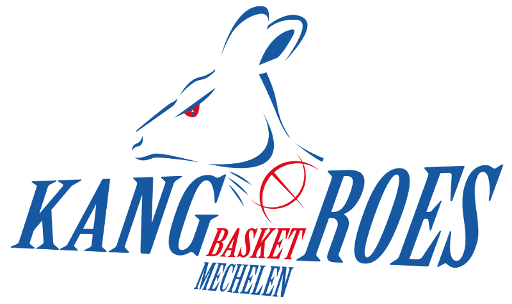
The Next in The BNXT: Impact of the youngsters (BE)
Self-Styled as the new up- and coming league with a focus on the development of young talent, the BNXT League has the lofty ambition of improving and securing the future of Belgian and Dutch Basketball. Now in its 4th season we at TIB figured it was about time to see exactly how this is playing out on the BNXT courts.
With an average age of 24.2 it is clear that the BNXT League is indeed a young man’s league compared to the top European competitions such as the Spanish Liga Endesa (27.8), the Italian Serie A (27.8), the French Betclic Elite (26.1) and the German BBL (25.3). Then again, with the Belgian and Dutch club budgets being as low as they are it is only logical that they can’t afford to sign the more established and experienced (read: better) players and therefore are forced to gamble on younger, inexperienced talent.
It must be said that the BNXT clubs have proven to be pretty adept at this difficult scouting exercise each season, producing a lot of talent that after their one season in the BNXT move on to bigger clubs and leagues (and bigger pay-checks). So, in that sense, the league does turn out to be a nice stepping-stone for younger players who are at the start of their professional careers. Unfortunately, these ‘one and done’-type players do not add much value to the sustained overall level of the league since they generally don’t hang around for more than one season. To lift the overall level of the league the BNXT clubs will have to look at the local Belgian and Dutch talents and invest in their continued development.
So, are the young Belgian and Dutch talents actually getting the opportunity to gain experience and further develop their game in the BNXT League?
To answer that question we will now look at each team and see what impact the youngsters have on their respective clubs. But before we can do that, we will first have to define the term ‘Youngster’. For the annual awards of ‘Youngster of the Year’, the league uses the criteria that a player needs to be 21 or younger (this year that means players born in 2003 or later). So for the sake of this article that is the criteria that we will use.
Belgian Teams:

One team that seems to have fully embraced their role as a youth developing team is Spirou Charleroi. With an average age of 21.9 and no less than 7 players (out of 13) born in 2003 or later, Charleroi is clearly ahead of the curve on the Belgian side of the competition. At the moment Charleroi holds a combined 13-9-1 (Win, Loss, Tie) overall record in the BNXT League and the FIBA Europe Cup. I think it’s fair to say that Charleroi is having a very nice season and are a perfect example that a team can be competitive in the current BNXT League while also giving the necessary opportunities to their youngsters. The 7 youngsters in question are Gustav Knudsen (21), Xander Pintelon (21), Craig Adzeh (21), Maxime Bilolo (20), Adedayo Polet (19), Ajani Faison (19) and Mohammed Tlarhi (19) and they are responsible for 43.7% of the overall statistical output of the club with Knudsen and Pintelon clearly leading the way, while Polet has been stepping it up lately as well.


Another team who is doing a solid job of allowing the youngsters their time on the court is Limburg United who have a 12-7 record at the moment in the BNXT League and the FIBA Europe Cup combined. With an average age of 24.9 Limburg is the 5th oldest (Belgian) team in the league which shows that they have a very nice balance of experienced players with 6 youngsters added to the mix. The youngsters in question are Jo Van Buggenhout (21), Oskar Giltay (17), Alexander Raedschelders (19), Tom Di Maria (20), Kobe Abelshausen (19) and Leon De Mol (17). Statistically these youngsters are responsible for 34.4% of the overall output of the team, putting them in second place of our ‘Youngster-Friendly’ ranking on the Belgian side of the BNXT League. The recent addition of Van Buggenhout has significantly increased the output of their youngsters, while the only 17 year old Giltay’s performances have also been very commendable and promising for the future.


The reigning champs for the past 13 seasons Filou Oostende have garnered quite a reputation for launching youngsters at the highest level in Belgium and developing them further into ‘Belgian Player of the Year’-type candidates. This season they are again living up to their (well-deserved) reputation with already 6 youngsters who have gotten their opportunity to gain experience. With an excellent record of 14-5 over the BNXT League and the Champions League combined, Oostende is again amongst the main candidates for the BNXT Championship title and they’re doing it with a young team who have an average age of 23.3 (3rd youngest team in Belgium). The 6 active youngsters are Noah Meeusen (19), Joppe Mennes (21), Tim Waerniers (16), Matteo Verstraete (21), Corentin Efono (18) and Siel De Doelder (18). Meeusen and Mennes are obviously the main protagonists of these youngsters, while all 6 youngsters combined are responsible for 27.5% of the team’s statistical output.


As has become pretty standard for Okapi Aalst these past couple of seasons, budgetary restrictions have had a large impact on the composition of their roster, forcing them to invest more in their own youngsters. Although the team is only dressing 3 youngsters of 21 or younger this season, these 3 do have a pretty large impact on the court as they’re responsible for 22.2% of the team’s statistical output. With their 6-8 record in the BNXT League the club with an average age of 24.7 (4th youngest in Belgium) is doing much better than last season. Unfortunately, that improvement hasn’t really reflected in the overall standings as they’re still the lowest ranked Belgian team in the league. The youngsters carrying much of the burden are Siebe Ledegen (21), Glenn Temmerman (20) and Jasper Unal (21). Ledegen especially has developped into a main player, playing an excellent 33.4 mpg, scoring 10.1 ppg and grabbing 4.6 rpg, which makes him the most used, highest scoring and second best rebounder amongst all the youngsters in the league (Belgium and The Netherlands combined).


The biggest revelation of the current season are the Kortrijk Spurs who have assembled an excellent 11-3 record, good for second place in the BNXT League standings. With their average age of 22.1 the Spurs are the second youngest Belgian team (3rd youngest team overall). Their lack of experience certainly hasn’t cramped their style as their high-octane offense and non-stop high pressure on the defensive end is making for a very entertaining combination to watch and clearly they’re getting the results to match their entertainment value. The Spurs have dressed 6 youngsters so far this season with Sean Pouedet (21), Jules Isebaert (19), Kobe Grymonprez (20), Matt Rotsaert (19), Gabriel Swolfs (16) and Guillaume De Mol (18). Pouedet and Isebaert obviously get the most use and have had the biggest impact on the court. Pouedet’s impact especially has been significant as he’s the league’s leader in assists with his 7.6 apg. All 6 youngsters combined are responsible for 17.6% of the team’s statistical output.


With the top 5 teams of our ‘Youngster-Friendly’ ranking done, things are going to see a significant drop in the remaining 5 teams, starting with the 9-5 Brussels Basket. With their average age of 25.4, Brussels is the 3rd oldest Belgian team in the league. So far this season they’ve had 4 youngsters who’ve received some playing time with Joe Agu Onyeka (20), Junior Bonsenge (21), Mehdi Mbawa (17) and Douglas Ntesa (21). Out of these 4 Ntesa has received the most playing time with an average of 10.9 mpg in a total of 8 games but unfortunately his impact has been very limited. Big man Agu Onyeka’s impact has been slightly bigger but his 9.3 mpg in only 7 total games played is still a far cry from what we at TIB would prefer to see. Overall, the Brussels youngsters are responsible for 10.9% of the team’s statistical output.


It has been a rough season so far for the Antwerp Giants and those struggles also seem to be reflected in the overall opportunities of the youngsters on the squad. Or rather, the lack therefore. After the departure of Jo Van Buggenhout, Antwerp now have only 2 youngsters left on their roster who have received playing time so far this season with Feie Tallir (18) and Letto Van Drom (18). Out of these two youngsters it’s Tallir who has clearly made the most out of his opportunities, averaging 2.4 ppg & 1.7 rpg in 13.1 mpg. With an average age of 25.8 the Giants are the 2nd oldest Belgian team in the league as they’re holding on to a 10-10 record in the BNXT League and FIBA Europe Cup combined. The 2 youngsters on the squad are responsible for 9.4% of the team’s statistical output.


It’s been a fairly disappointing start of the season so far for the 7-7 Leuven Bears and things aren’t exactly looking good on the “Youngster-Friendly’ end either. With only 2 youngsters on the roster who’ve received playing time so far, Leuven’s average age is 25.3 which puts them as the 4th oldest team in Belgium. Obviously, having a 41 year old Belgian basketball icon (Wen Mukubu) on your squad is bound to increase your age average by quite a bit. The 2 lucky youngsters who have received playing time so far this season are Roel Bucumi (21) and Victor Vanderstraeten (18). Where Vanderstraeten’s opportunities have unfortunately been negligible, Bucumi on the other hand is starting to get more and more playing time and hopefully with the departure of Overton this positive trend will continue. Combined, the 2 youngsters are responsible for 7.9% of the team’s statistical output.


With an average age of 26.4 – which puts them as the oldest team in the BNXT League (both countries) – you can already figure that youngsters don’t really come into play for the Kangoeroes. The lack of youngsters hasn’t had a negative impact on their ranking in the current season’s standing though as they have accumulated a solid 9-5 record in the BNXT League which puts them in the top 5. So far this season only 2 youngsters have received any playing time for the Kangoeroes with Vic De Wilde (21) and Pedrito Cruz (19). Although calling it “playing time” is quite a stretch of the meaning of the term since both players combined have only been on the court for a measly 14 minutes in a total of 5 games and are thus only responsible for 1.1% of the team’s statistical output. As far as I’m concerned, the most surprising thing about that number is that there’s actually a team who does even worse.


Who remembers the good old days of Mons-Hainaut with talented emerging youngsters such as Loïc Schwartz, Amaury Gorgemans, Lorenzo Giancaterino, Mathieu Houdart, Anthony Lambot, Alexandre Libert, Niels Marnegrave, etc.? Unfortunately those days are long gone for Mons-Hainaut. Despite having a constantly declining budget and an ever smaller and smaller rotation, Mons-Hainaut keeps grasping at temporary success, spending their budget on ‘one and done’-type import players. In their 9 man rotation this season (8 since the injury to Garrison) the on average 24.8 old team only dresses 3 Belgian players, while fluffing up their bench with a wide array of youngsters who get a prime seat to watch the game and high-five the actual players during time-outs. Out of this wide-array of youngsters only 2 of them have actually managed to set foot on the court (during the game) for an astounding total of 6 minutes. Those 2 lucky youngsters are Jeremy Mbanze (20) and Louis Baertsoen (20). It therefore shouldn’t come as a surprise that the overal impact of these youngsters on the statistical output of the team is an impressive 0.2%! I do admit that Mons is currently having a fairly good season as they hold a 7-7 record but I just don’t see how this practice can be sustained, looking ahead to the future. Unless the team drastically changes their mentality, I would suggest all talented youngsters at Mons to do what most of their youngsters of the previous seasons have done and that is to find themselves a different club.

To conclude this overview: out of a total of 40 youngsters who have seen some action for the Belgian teams in the BNXT League, 16 youngsters have a respectable role and play more than 10 minutes per game. The 24 remaining youngsters are mainly bench-warmers who only see action when the game has already been decided.
In our next article we will discuss the Dutch teams.
So what do you guys think? Do the Belgian youngsters get enough opportunities in the league this season? Let us know in the comments!




